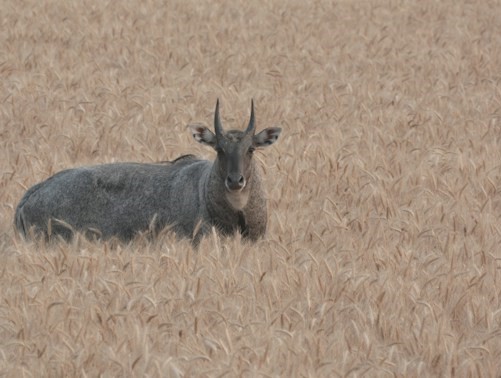Nilgai (Blue Bull) | Facts, Size, Diet & Reproduction
The Nilgai (Boselaphus Tragocamelus) is a large antelope native to the Indian subcontinent. Their range extends from Pakistan to parts of Northern India and Nepal. Due to the blue-grey colour of its coat, it is also known as Blue Bull. Nilgai are the largest Asian antelope and are sexually dimorphic, with males being larger than females. Nilgai is found in a variety of habitats, including grasslands, forests and agricultural fields. They are well adapted to both arid and semi-arid environments. Nilgai are social animals and are often found in groups. They are known for their alertness and may be wary of predators. Nilgai cannot run at fast speed due to which they become prey to lion, tiger and leopard.
Size and Appearance
Males are generally larger than females, with males weighing between 180 to 250 kg (400 to 530 lb) and females weighing around 120 to 220 kg (265 to 485 lb). Their length is approximately 5 to 7 feet and height is 4 to 5 feet. The colour of the male is blue and the colour of the adult female is brown. The horns of the male are usually small and curved and those of the female are generally absent. The length of its horns is about 20 cm. The male Nilgai is as tall as a horse.
Diet
Nilgai is primarily herbivorous, eating grass, leaves and other vegetation. It likes to go into fields and eat crops and is known to damage crops, sometimes leading to disputes with farmers. These are animals that cannot survive for long without water.
Reproduction
The breeding process of Nilgai mostly takes place in the winter season. Females usually give birth to babies in September or October after the rainy season ends. Their child is born in 9 months. After birth the child cannot stand for 8 hours. A female Nilgai feeds yellow milk to someone’s child. There is no difference of opinion between them. All the herds together raise the baby Nilgai. The lifespan of Nilgai is only 7 to 10 years.









